Do guinea pigs make good pets? Some basic info about cavies.
Guinea pigs are the cutest small pet animals, which are quite smart and really interesting to watch. Most of them gladly interact with people. In fact, they love cuddling and playing with their owners. They might even squeak a little bit or start running around their cage if they see the owner passing by their habitat. Guinea pigs (also called as cavies) are probably the most sociable rodent pets you may think of, as they’re known for living in small groups in the wild, which makes them wish for the interaction. That’s why they make great home pets, which are relatively not too difficult to take care of. And that’s also the reason why it’s better to purchase a pair of them to ensure that your pets don’t feel lonely and abandoned. As unlike other pet rodents like rats, rabbits or hamsters, they really struggle while living alone.
Even though cavies are bigger than hamsters, rats, mice and other tiny rodents, they’re still quite delicate and require more attention if compared with the pets I’ve just mentioned. They won’t feel happy if you don’t talk to them or play with them every single day. Most of them enjoy sitting on human’s lap and getting their heads petted or their hair brushed. They’ll sit with you while you watch TV, they’ll run around the floor and play with different toys you’ll set up for them. And, the funny thing is that a guinea pig toys aren’t necessarily the ones you may purchase at the store. You may easily turn an old plastic flower pot, a cardboard box or a coffee jar into the tunnel or hiding spot for these little munchkins. And thrust me, they won’t notice a difference.
Basically, a guinea pig is like a miniature cat that is also able to sit in a cage or whatever habitat you set up for it for quite a while, so they’re much easier to look after than cats or dogs. As many people note, cavies make the best first pets for kids. The guinea pigs’ life expectancy is about 10 years. So, if you ensure pleasant living conditions and proper care to your pet, it will live quite a long life with you.
If you were wondering how big the guinea pigs get, then I’ll tell you that they look like a half of an average pet bunny rabbit. Baby guinea pigs are really tiny, about 3-4” long. As they get older and reach the maturity (it’s when your cavy is about 13-14 month old), they may get from 8 to 12 inches long and they’ll weigh from 2lbs 3oz to 2lbs 7oz. They may have grey or patched fir, some types ma have quite long hair. Also, you might not believe it, but you may actually learn how to train a guinea pig to teach your pet some tricks. Isn’t it so cool?
Moreover, they require much more living space that you may have thought they need, especially considering the fact that it’s quite unfair to these pets to keep them along without a single cavy mate. They’re also quite particular about their food, even though they like munching on something all day long. It’s just a part of them being rodents, and there’s nothing wrong with it. Those rodents can’t live without their favorite snacks. After several days (or weeks) of their stay at your house, you’ll be able to figure out what foods they prefer the most.
However, you have to be really careful and think twice before giving something to your guinea pigs. As it was already mentioned, they’re quite delicate and sensitive, especially when it comes to their digestive system. For instance, piggies really enjoy eating their greens, but some of them may cause some stomach problems up to severe diarrhea, which is really dangerous to the pet’s health and results in the vet’s visits.
Some other things may lead to the pigs’ health issues, that’s why you have to conduct a throughout research and learn how to take care of a guinea pig prior heading to the pet shop to get a new family friend and make sure that he lives a happy life at your house. Hope you find these tips on how to care for guinea pigs helpful.
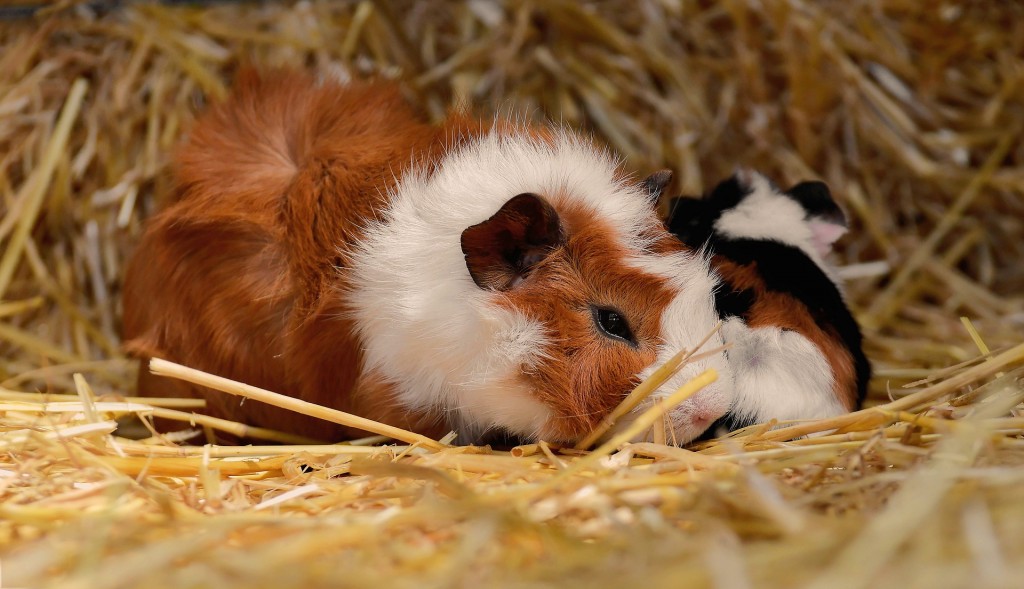
5 most important tips on how to take care of guinea pigs
1. Purchase a nice and roomy cage for guinea pigs
Vets suggest that you should purchase a cage or provide at least 4-7 sq. feet of living space per each cavy. So, as we determined that it’s better to keep them in pairs, a 10-15sq.ft. cage will be perfect for a pair of cavies. And you should also know that two female cavies are more likely to live together in peace rather than two males. And only if you are ready to breed the guinea pigs, you shouldn’t put a girl and a boy into the same cage, as it’s quite hard to find a guinea pig sterilization place.
If you can’t devote too much space to place a large cage for them, look for a two or eve three-storied one. It will be even more entertaining for your pets, as they’ll be able to run up and down the ladders between the floors of their home. And, you’ll be able to organize their cage, so that they have separate sleeping, eating and playing areas.
Make sure to purchase the cage with a solid bottom, but not with the latticed one, as metal grids will damage tiny guinea pig’s legs. And, they just won’t feel comfortable in it. If you don’t have any other pets which might mess with guinea pigs (or too young children), you may totally use a plastic kid’s pool of necessary size instead of the metal cage. Or, that could be an awesome travelling option. But, of course, a cage looks much nicer and pigs are able to look around through its grids, so it’s probably better to invest in it.
Place the pets’ habitat somewhere, where they’ll get enough sunshine and where they’ll be able to observe their owners as often as possible.
2. Set up the cavies’ habitat
Cover the bottom of the cage with a thick layer of crumpled pieces of newspaper, special cellulose litter for rodents or wood shavings. The last ones work the best for the cavies’ cage bedding, but make sure to stick to aspen or pine bedding and don’t ever use the cedar shaving, as it may have a damaging impact on cavy’s respiratory system.
Guinea pigs love different toys, as well as finding various places to hide in. Pet shops have entire sections of accessories for rodents’ and specifically guinea pigs’ cages, so you may check them out and purchase tunnels, see-saws, jingling balls, hay feeders, dangling and wooden chew toys, hammocks, little hiding houses and soft beds, ladders and other things. It’s also possible to check out different DIY projects to make several toys or cage accessories for your pet. As they’ll love the cardboard hay feeder made out of the empty roll of toilet paper, or a hay house carved out of a cardboard box, or a sewn bed, or a handmade hammock, or a plant pot hiding spot, or a chew toy and a ladder made out of the apple tree sticks from your garden just as much as the ones you may buy at the store.
But the most important accessory for your cavies is a good water bowl or bottle, as they tend to drink quite a lot of water throughout a day. The best option is probably the hanging water dispenser bottle, as pigs won’t be able to pee or fall in it, or just overturn it and ruin the bedding.
Oh, and by the way, the cage has to be spot cleaned at least twice a week (especially if you have two guinea pigs). The throughout cleaning with the complete change of bedding has to be done at least once a week or even more frequently when it’s hot and/or humid in the house.
3. How to feed a guinea pig
As we’ve already established, a constant water supply is vital for guinea pigs. So, it’s necessary to change the water in their bottles every single day. Some people add vitamin C into the water, but cavies might not like its taste, so they’ll stop drinking water due to that reason.
The vets emphasize that it’s vital to ensure a balanced diet to your guinea pigs and include vitamins in it. Hay is the most important food for the cavies, and you should add some in their cage several times per day. Basically, they’re allowed to eat as much hay as they want, but it’s better to divide it into several portions, so that they can munch on it throughout the day. If you don’t give them enough hay, they might develop a teeth condition, which will require surgical correction.
Another component of cavies’ diet is greens. Leafy and other vegetables have to constitute up to 20-30% of their daily ration, which is about one cup of them per day. Again, don’t give out everything at once. Divide their veggies into several servings and feed them to your cavies alternately with hay. Don’t give your cavies too much greens and veggies to avoid upset stomach problems. And be quite careful about what greens and vegetables you give to your pets.
Generally, guinea pigs are allowed to eat carrots (chop them into slices), salary, a little bit of spinach, cucumber, broccoli, peas and corn. You may treat them with apple slices and pieces of strawberry every now and then. Don’t feed red-leaf salads, rocket, lettuce, potatoes and cauliflower to your cavies, as those are definitely the foods that may cause digestive issues and even allergies. And of course, you’re not supposed to feed your pets human or other animals’ food (aside from the raw vegetables and greens mentioned above).
Give your cavy some pellets every single day. Opt for the ones that are specifically designed for guinea pigs, but not for bunny rabbits or other rodents. Follow the instructions on packaging to figure out how much pellets your cavy need per day.
Consult with an experienced vet
4. Socialization
It’s Ok to take your guinea pigs out of the cage and hold them for a little while. Once they get used to their owners, they start liking when people pet and groom them. They’ll gladly play with their owners or sit on their laps. Don’t forget to talk to your guinea pigs for several minutes when you pass their cage.
It’s also quite important to limit their contacts with bunnies and some other rodents, which might naturally carry the bacteria, which don’t harm their bodies, but are extremely dangerous to cavies. Dogs and sometimes even cats are fine, as long as you teach your bigger pets not to harm the guinea pigs and watch them interact.
Giving your cavies an opportunity to run around a bigger space on the floor should be the part of your routine. Set up a playing area in your hall or living room with the help of low pen. You may also limit their space by pieces of cardboard or something like that. Just make sure that they can’t escape. Place a couple of toys (like tunnels, rolling balls, sea-saws, etc.) into the pen and let them do their exercise.
5. Guinea pigs’ health
You should trim their nails as needed and groom them every single day. Use ordinary clippers to trim their toenails and light them up with a little flashlight to be able to see the pink part of their nails not to cut it off and cause bleeding. This will help if your guinea pigs have dark nails. If you can’t do that on your own as you’re afraid to hurt your cavies, bring them to the pet groomers.
Also, vets don’t recommend bathing cavies more than a couple of times per year, even though some of them might really enjoy swimming.
If you notice that your pets have been sneezing or coughing, you should better reach out to a vet. Find an experienced local veterinarian on HireRush.com and call him directly from the site to book the visit. Check the pigs’ eyes, ears and teeth regularly. Severe diarrhea, ear and eye issues are also the reasons to head out to the vets.
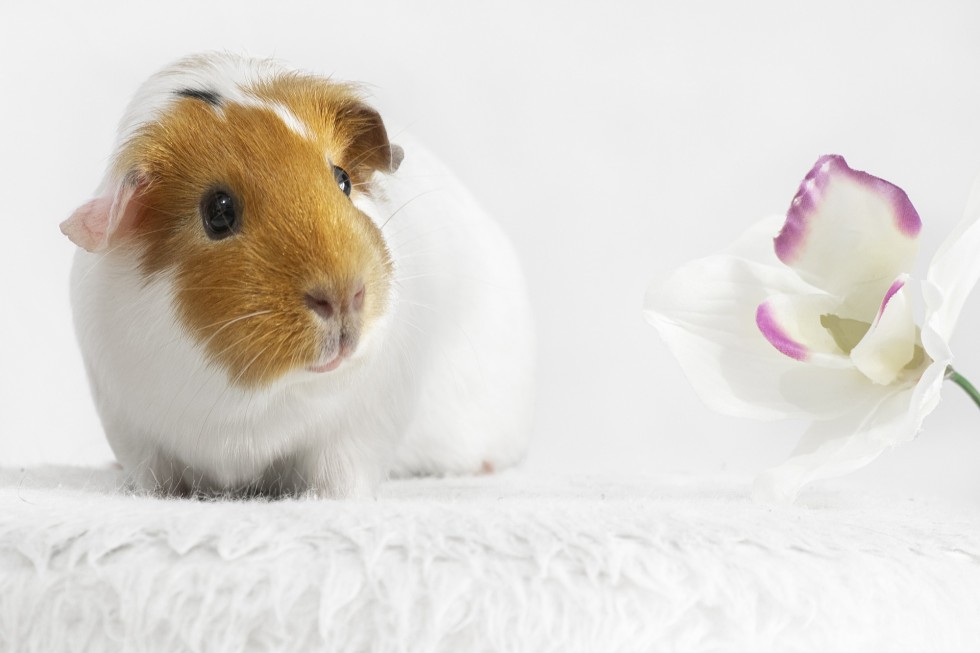
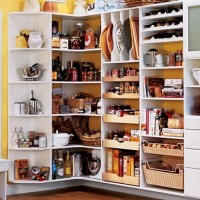
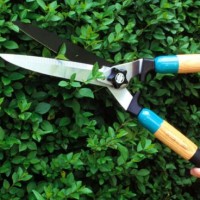


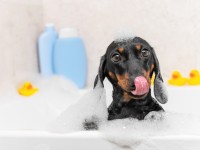
You cannot give guinea pigs just any kind of stick you find in your garden. Nor can they have pinecones. They are dangerous for guinea pigs. If you research this you will find that there are safe and unsafe woods for guinea pigs. Pine and cedar are amongst those that are dangerous so you certainly should not be using these to make chewable toys of shelters for guinea pigs!
Reading this article felt like a personal shoutout to my guinea pig squad! As the proud owner of five of these adorable fluffballs, I can attest to the importance of proper care and attention. From their quirky personalities to their insatiable appetite for veggies, guinea pigs truly make life brighter. Thanks to tips like these, my little fur babies are living their best lives, complete with cozy bedding, daily veggies, and of course, plenty of cuddles. Here’s to all the guinea pig enthusiasts out there – may your cages be clean and your squeaks be merry!
Clearly, many thanks for the information.
It is a pity, that now I can not express – it is compelled to leave. But I will return – I will necessarily write that I think on this question.
I confirm. It was and with me.
I’m so thankfull for the article. Now I can buy a guinea pig. It was my dream for ages.